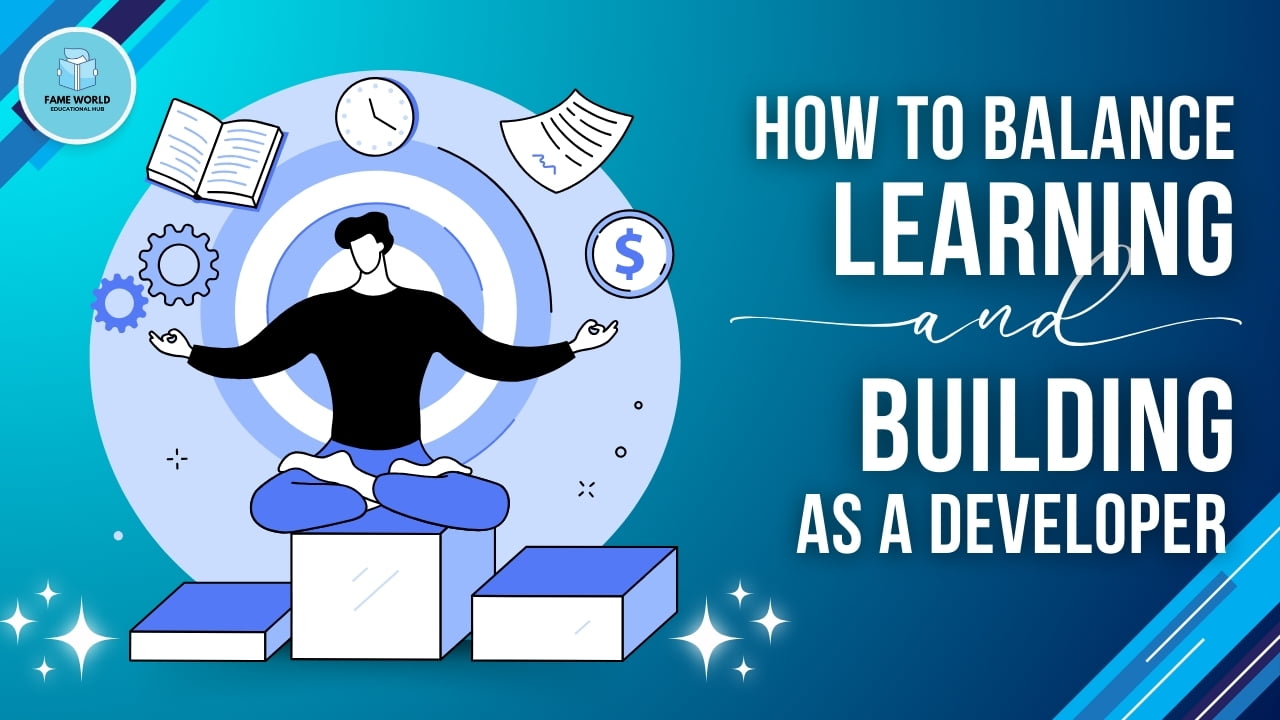In the fast-paced world of technology and innovation, finding the right balance between learning and building is essential for personal and professional growth. Whether you’re a developer, entrepreneur, or hobbyist, managing both learning new skills and applying them practically can be challenging. This blog post explores strategies to effectively balance learning and building, ensuring you maximize your potential and achieve your goals.
1. Understanding the Importance of Both Aspects
Learning involves acquiring new knowledge, skills, and insights. It keeps you updated with the latest trends, technologies, and best practices. On the other hand, building refers to applying what you’ve learned in real-world projects. It’s where theory meets practice, and you can see the tangible results of your efforts.
Balancing these aspects is crucial because:
- Continuous Learning: Helps you stay relevant in a constantly evolving field.
- Practical Application: Reinforces your learning by solving real problems and gaining hands-on experience.
- Avoiding Burnout: Ensures you don’t get overwhelmed by either learning too much without applying it or working on projects without updating your skills.
2. Create a Structured Learning Plan
To balance learning and building, start with a structured plan:
Set Clear Goals: Define what you want to achieve in both learning and building. For example, you might want to learn a new programming language and build a web application with it.
Break Down the Learning Process:
- Identify Key Topics: Choose specific areas or technologies to focus on.
- Allocate Time: Set aside dedicated time for learning each week.
- Use Varied Resources: Incorporate books, online courses, tutorials, and practice exercises.
Schedule Building Projects:
- Plan Projects: Outline projects that align with your learning goals.
- Set Milestones: Break projects into smaller tasks with deadlines.
- Track Progress: Regularly review your progress and adjust your plan as needed.
3. Integrate Learning with Building
Combine learning and building for maximum efficiency:
Learn by Doing: Apply new knowledge immediately by working on related projects. For instance, if you’re learning a new framework, build a small application using it.
Experiment with Side Projects: Use side projects to explore new technologies or techniques. This can provide a safe space to experiment without the pressure of a client or formal project.
Reflect and Iterate: After completing a project, reflect on what you’ve learned and how you can improve. Iterate on your projects based on feedback and new insights.
4. Manage Your Time Effectively
Effective time management is key to balancing learning and building:
Use Time-Blocking: Allocate specific time blocks for learning and building. For example, dedicate mornings to learning and afternoons to project work.
Prioritize Tasks: Focus on high-impact tasks that align with your goals. Use tools like to-do lists, calendars, and productivity apps to stay organized.
Avoid Multitasking: Concentrate on one task at a time to improve efficiency and reduce errors.
5. Stay Motivated and Avoid Burnout
Maintaining motivation and avoiding burnout are crucial:
Set Realistic Expectations: Understand that it’s okay to have setbacks or slow progress. Adjust your goals and timelines as needed.
Celebrate Small Wins: Acknowledge and reward yourself for achieving milestones, whether they’re learning achievements or project completions.
Take Breaks: Regular breaks and time off are essential for maintaining long-term productivity and creativity.
6. Leverage Community and Networking
Engage with communities and networks to enhance your learning and building experience:
Join Forums and Groups: Participate in online forums, discussion groups, and local meetups related to your areas of interest.
Seek Mentorship: Find mentors who can provide guidance, feedback, and support.
Collaborate with Peers: Work on collaborative projects to gain different perspectives and learn from others.
7. Evaluate and Adjust Regularly
Regular evaluation helps in fine-tuning your approach:
Review Goals and Progress: Periodically assess your goals and progress in both learning and building.
Adjust Plans as Needed: Be flexible and adjust your plans based on your experiences and changing interests.
Seek Feedback: Get feedback from peers, mentors, and users to improve your learning and project outcomes.
Conclusion
Balancing learning and building is a dynamic process that requires thoughtful planning and execution. By setting clear goals, integrating learning with practical projects, managing your time effectively, and staying motivated, you can achieve a harmonious balance. Remember that both learning and building are integral to your growth and success, and finding the right balance will help you make the most of both.
Feel free to adapt these strategies to fit your personal needs and circumstances. Embrace the journey of continuous improvement, and you’ll find yourself growing both in knowledge and practical experience.



